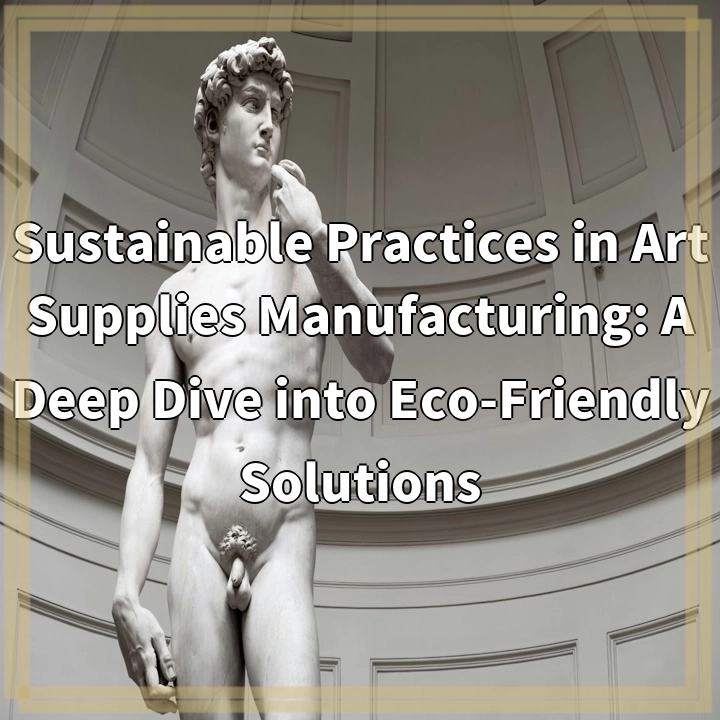
What it is:
Art supplies manufacturing is a crucial industry, providing artists and creative individuals with the tools and materials needed to express their artistic visions. However, the production of art supplies can have a substantial environmental impact. It involves the extraction of raw materials, energy consumption during manufacturing processes, and the use of chemicals that can be harmful to ecosystems and human health. Sustainable practices in art supplies manufacturing aim to minimize these negative impacts and promote eco-friendly solutions throughout the supply chain.
Real-World Problems:
Despite the creative and inspirational nature of art, the manufacturing process of art supplies poses several challenges from an environmental standpoint. Some of the real-world problems associated with unsustainable practices in art supplies manufacturing include:
1. Resource Depletion:
The extraction of raw materials, such as wood for pencils or metals for paint tubes, contributes to deforestation, habitat loss, and the depletion of finite resources. Unsustainable practices can lead to the overexploitation of these resources, causing long-term ecosystem damage.
2. Energy Consumption and Greenhouse Gas Emissions:
Manufacturing processes in the art supplies industry often require significant amounts of energy, which can result in the emissions of greenhouse gases. This contributes to climate change and air pollution, further exacerbating environmental issues.
3. Chemical Pollution:
Art supplies, such as paints, glues, and solvents, often contain toxic substances that can be harmful to both human health and the environment. Improper disposal of these materials can lead to water contamination and negative impacts on ecosystems.
4. Waste Generation:
The production and packaging of art supplies can generate considerable waste, including plastic packaging, discarded materials, and manufacturing byproducts. Without proper waste management and recycling practices, this waste can end up in landfills or pollute natural environments.
5. Lack of Transparency and Certification:
One of the challenges in addressing sustainability in the art supplies industry is the lack of transparency and standardized certification. It can be difficult for artists and consumers to determine the environmental impact of specific products and identify those that are produced using sustainable practices.
In the next sections of this blog, we will explore various eco-friendly solutions and case studies that highlight successful sustainability initiatives in the manufacturing of art supplies.

Sustainable Solutions in Art Supplies Manufacturing:
1. Sustainable Material Sourcing:
Using responsibly sourced materials, such as sustainably harvested wood or recycled metals, can help reduce the environmental impact of art supplies manufacturing. This involves partnering with suppliers who follow sustainable forestry practices and promoting the use of recycled materials.
2. Energy Efficiency and Renewable Energy:
Implementing energy-efficient technologies and practices in manufacturing facilities can significantly reduce energy consumption and greenhouse gas emissions. Additionally, transitioning to renewable energy sources, such as solar or wind power, can further minimize the carbon footprint of art supplies manufacturing.
3. Non-Toxic Formulas and Water-Based Alternatives:
Developing art supplies with non-toxic formulations, eliminating harmful chemicals, and promoting water-based alternatives can help reduce environmental pollution and minimize health risks for artists and consumers.
4. Waste Reduction and Recycling:
Implementing waste management strategies, including recycling programs and reducing packaging waste, can help minimize the environmental impact of art supplies manufacturing. Finding innovative ways to repurpose manufacturing byproducts or finding alternative uses for waste materials can also contribute to a circular economy.
5. Transparency and Certifications:
Encouraging transparency in the industry and promoting standardized certifications, such as eco-labels or third-party certifications, can help artists and consumers make informed choices. This allows them to support manufacturers who prioritize sustainability and have a positive environmental track record.
By adopting these sustainable solutions, the art supplies manufacturing industry can play a significant role in protecting the environment and promoting a more eco-friendly creative community. It is through collective efforts that we can ensure a greener and more sustainable future for both artists and the planet.















